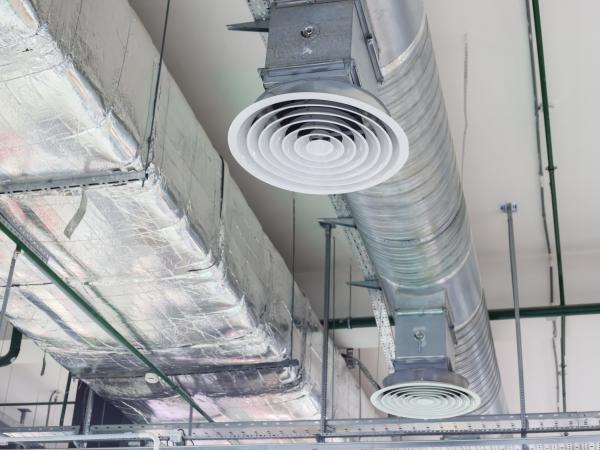 Source: Questline
Source: Questline
HVAC systems serve many purposes in buildings. They regulate temperature and humidity, while ensuring air freshness and proper airflow. HVAC systems also use a lot of energy, so energy-efficiency measures can have a big payoff in lower operating costs. Given the critical role that HVAC plays in building operations however, the goal of any energy upgrade project should be to increase system efficiency while maintaining or enhancing comfort and indoor air quality.
One of the best and most cost-effective ways to achieve both is to modify controls to change the way air distribution system operates. Control strategies include optimizing scheduling, resetting supply air temperature and pressure, taking advantage of free cooling and adding demand control ventilation.
Optimizing scheduling
Optimizing scheduling is a common sense control procedure that can provide significant energy savings. Typically, an HVAC system is set to turn on and off automatically based on expected operating hours. For example, the cooling system might turn on at 7 a.m. and off at 7 p.m.
Adjusting these times for varying seasons can reduce energy costs. When temperatures are milder in the spring and autumn for instance, the cooling system could be schedule to turn on later in the morning.
Resetting supply-air temperature
Cooling coils are typically designed to deliver air at 53°F to 55°F to meet cooling needs at the hottest outdoor temperatures. During milder weather, this temperature can be reset upward to reduce wasteful reheating of already cooled air. The most common reset strategy is a simple proportional reset based on the outside air temperature. On a hot day, the supply-air temperature is set to its design value, and when the weather is cooler, it's increased.
Resetting pressure
Pressure reset can provide additional savings in systems that have variable frequency drives installed. Reducing the pressure supplied by fans also reduces the flow supplied. This, in turn, decreases the amount of power required to operate the fan. Reducing the duct pressure by 30% when less air is required can provide energy savings of 50% or more, according to ENERGY STAR®.
Economizer cooling
An air-side economizer includes three main components — damper, temperature sensor and a motorized actuator. When the outside air temperature is right, the damper opens to bring in free outside air to provide cooling. When the temperature increases, the damper closes to minimal levels. Basic dry bulb economizers sense only temperature. Wet bulb units sense both temperature and humidity, increasing energy savings.
Proper economizer installation and maintenance are vital for optimizing energy savings. A malfunctioning unit can end up wasting energy and reducing comfort.
Demand control ventilation
Building codes typically require minimum levels of fresh air to maintain indoor air quality. To meet these requirements, most buildings are ventilated at a fixed minimum rate based on the building type and design occupancy. Demand control ventilation (DCV) uses carbon dioxide sensors to vary ventilation levels based on actual occupancy, saving energy while maintaining indoor air quality.
Facilities that would save the most from implementing DCV include those with long operating hours and widely varying occupancy levels. These include grocery stores, retailers, theaters, restaurants, sports arenas and public assembly facilities.
See ASHRAE Guideline 36, GUIDELINE 36-2021 -- HIGH-PERFORMANCE SEQUENCES OF OPERATION FOR HVACSYSTEMS , for additional guidance. By implementing these control strategies, you can achieve some healthy energy savings while maintaining a fresh, comfortable and productive indoor environment.

